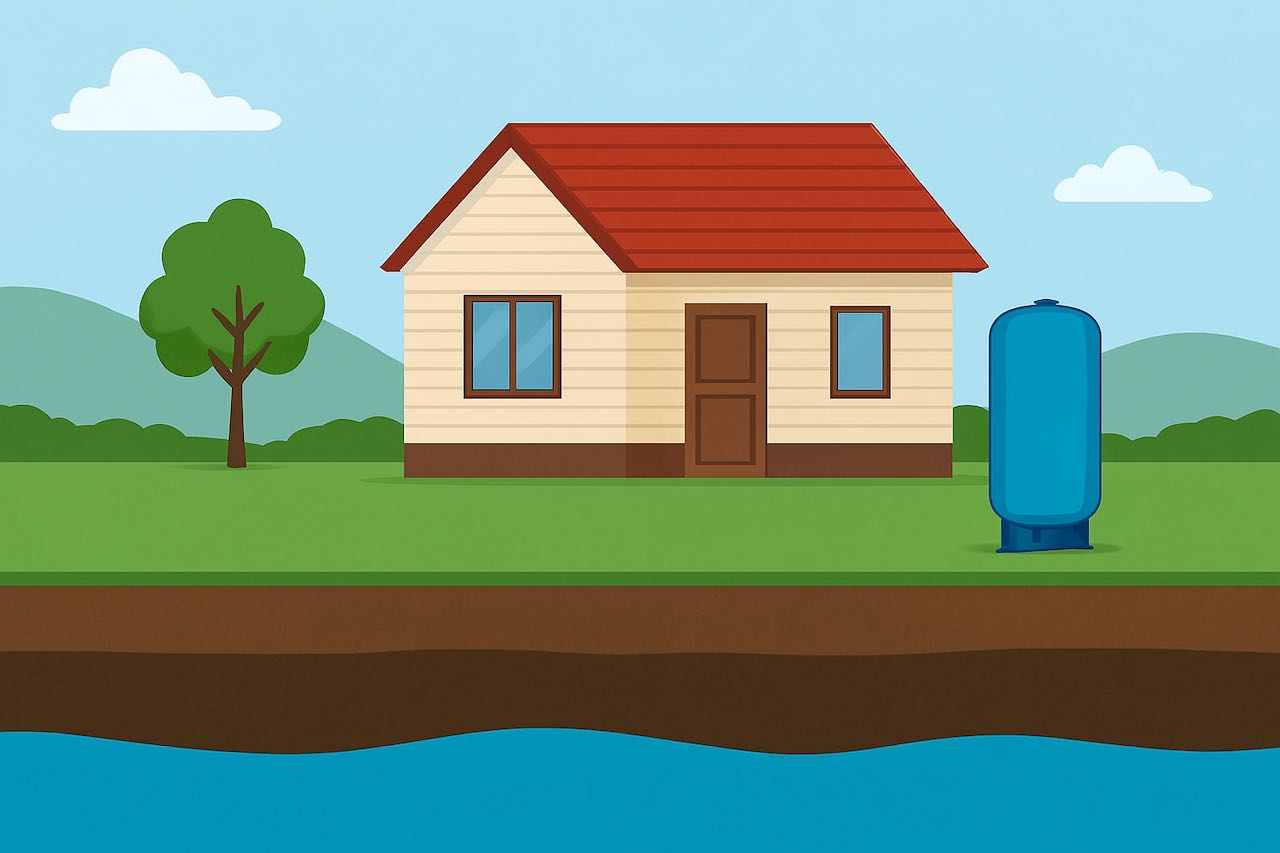Water Contaminants in Well Water - Choose the Right Well Pump

THERE MIGHT BE CONTAMINANTS IN YOUR WELL FROM YOUR WELL PUMP
Here are several tips for finding out how safe your well water is.
As you likely know, water quality varies widely throughout the nation. Some sources of water are very low grade – even dangerously so. Some couldn’t be purer.
TEST YOUR WELL WATER ANNUALLY
In general, it is recommended that well owners have their water tested annually… or more frequently if you notice a change in your water, if conditions nearby have changed (e.g. flooding or new human activity), or if you have anyone pregnant, or young children or elderly in your home.
INDICATIONS OF CONTAMINANTS
- HARD WATER
Dry, itchy skin or hair. Scratchy laundry. Difficulty getting soap to lather. - IRON
Reddish-brown stains on fixtures and clothing. Orange/brown slime in water. - ACIDIC WATER
Blue/green stains on fixtures and clothing. - POISONOUS CHEMICALS YOU CAN SMELL or SEE
Sulfur – the bad-egg smell of hydrogen sulfide. Some metals. - POISONOUS CHEMICALS THAT YOU CAN’T DETECT YOURSELF
Arsenic, lead, rocket fuel. - DANGEROUS BACTERIA, VIRUSES, PARASITES
- SEDIMENT
Not only unsightly but provides a wealth of hiding places for organisms.
WHAT TO KNOW
IDEAL LEVEL FOR WELL CONTAMINANTS
The Maximum Contaminant Level Goal (MCLG) – This is the level of a contaminant in drinking water below which there is no known or expected risk to health. MCLGs allow for a margin of safety and are non-enforceable public health goals. For some contaminants, the desirable level is literally zero… not even 1 part in a billion is good enough. For others, various levels are fine.
LEGAL CONTAMINANT LIMIT
The Maximum Contaminant Level (MCL) – This is the highest level of a contaminant that is legally allowed in drinking water. MCLs are set as close to MCLGs as feasible using the best available treatment technology and taking cost into consideration. This can mean that there are contaminants in the water that WILL cause harm, but it is just physically or financially impossible to take that amount all the way down to the ideal MCLG. MCLs are enforceable standards.
UNREGULATED CHEMICALS
In addition, there are many chemicals and microbes that may be present in drinking water that are not under any current regulations.
WELL WATER PURIFICATION
Since there are many possible contaminants and since water can be “legal” but still contain harmful chemicals, purification is something you may want to take care of yourself.
A purification system can be “whole house” or just for your drinking water. A typical system might be:
- A large pore ceramic filter to take out larger particles
- A finer pore ceramic filter to take out very fine particles
- An ultra-violet light to kill organisms
- A charcoal filter to remove some chemicals
- A final reverse osmosis unit to remove many types of remaining contaminants.
You can see this multi-component approach is very effective.
And if a particular chemical is present in high amounts, there are filters that are specific to a particular contaminant, e.g. for arsenic or iron.
What is the best purification system can vary a lot, depending on the circumstances. Although you can buy water purifiers online, we’d tend to recommend consulting a professional after having your water tested… an expert who can sell you THE RIGHT SYSTEM to specifically address YOUR particular needs and the condition of YOUR water.
GET A SAFE DRINKING WATER ACT COMPLIANT WELL PUMP
Another part of your water equation is your water pump. Make sure your water pump is Safe Drinking Water Act (SDWA) compliant. Some older water pumps may be adding contaminants to your water supply.
Simple Pump well hand pumps are Safe Drinking Water Act Compliant. Get a quote today to make sure your water is safe to drink!







